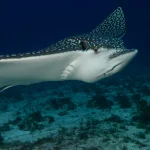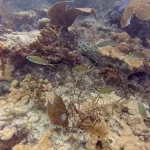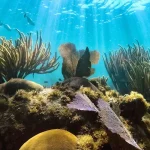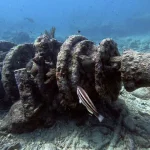Table of Contents
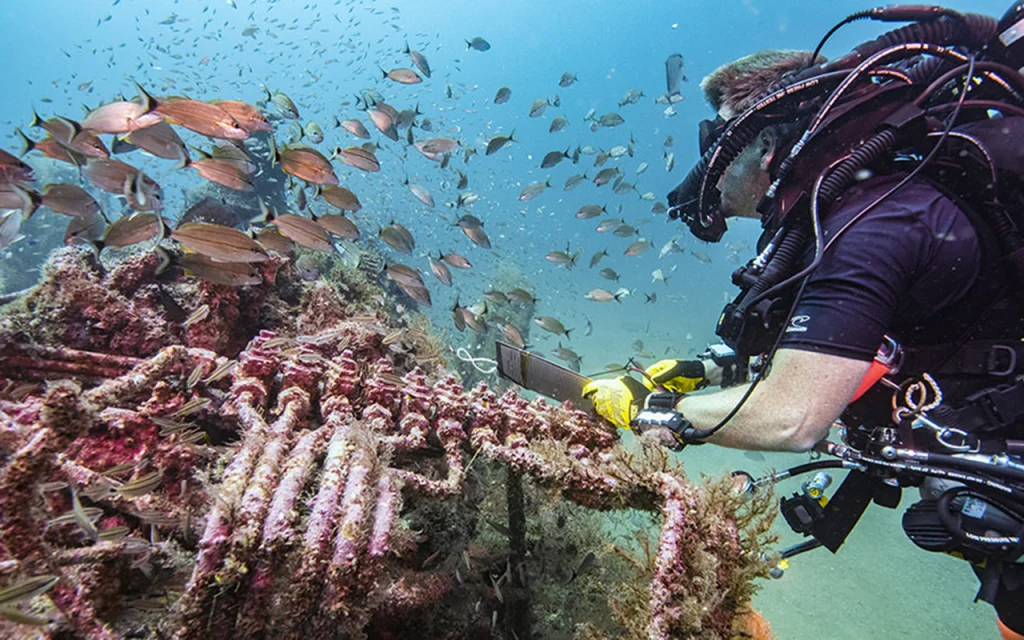
The Tarpon had a long operating history as a freight and passenger ship along the Gulf coast after being constructed in the late 1800s, before sinking in 1937 due to overloading in a storm.
Article at a Glance
- The SS Tarpon lies in around 95 feet of water off the coast of Panama City, Florida at coordinates 30°05′42.12′′N 85°56′33.3′′W
- It was originally built in 1887 in Wilmington, Delaware as the Naugatuck, an iron-hulled, twin-screwed freight and passenger steamer
- The Tarpon sank on August 31, 1937 after departing Pensacola heavily overloaded with cargo including flour, sugar, canned goods, beer and iron bound for Panama City
- 18 people died when the Tarpon sank in rough weather, including the captain who was blamed for staying on course while overloaded
- The wreck has developed into an artificial reef “teeming with marine life” including hard corals, crustaceans, jellies, amberjacks, grunts, and sharks
- Prominent features still visible on the wreck include the anchor winch, boilers, propellers, engines, and remnants of the cargo holds
- The SS Tarpon is one of Florida’s 12 Underwater Archaeological Preserves, designated in 1997 to protect its historical significance as a late 19th century steamship
Shipwreck Location, Coordinates and Depth
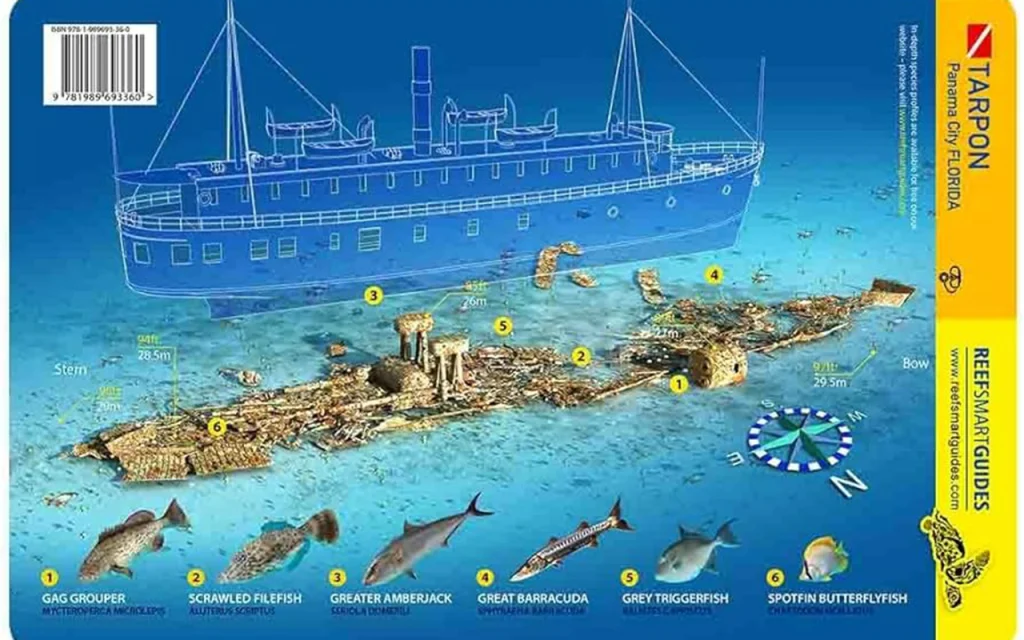
The SS Tarpon shipwreck is located:
Depth
- In approximately 95 feet (29 m) of water on a sand and live rock bottom
Location & Coordinates
- 7.8 nautical miles (14.4 km) off the shore of Panama City, Florida
- At coordinates 30°05′42.12′′N 85°56′33.3′′W
What Kind of Marine Life Can Be Found on The USS Oriskany
Diverse Marine Life
- The wreck site is described as “an oasis of marine life” and “teeming with marine life”.
- Specific marine creatures mentioned include hard corals, crustaceans, jellies, amberjacks, grunts, and sharks.
- One source notes that in the past, the Tarpon wreck “was once known for the large number of sandtigers (sharks) that used to live in the waters surrounding the wreck,” though they haven’t been seen recently.
Artificial Reef
- Being an older shipwreck that has been submerged since 1937, the Tarpon has had time to develop into an artificial reef.
- The wreckage provides structure and habitat that attracts a variety of fish and other marine organisms.
- One dive shop states “It’s fascinating for our divers to visit a wreck that was built in 1887 and sunk in 1937. Now, over 80 years later, there are still sections of the ship that remain and are home to a vast array of marine life that our divers look forward to seeing year after year.”
Conditions
- Visibility around the wreck is described as “decent,” though it can become murky after rainfall.
- The wreck rests on a sandy and live rock bottom at a depth of around 90-95 feet.
Key Information
| Category | Details |
|---|---|
| Location | 7.8 nautical miles off the shore of Panama City, Florida |
| Coordinates | 30°05′42.12′′N 85°56′33.3′′W |
| Depth | Approximately 95 feet (29 m) on a sand and live rock bottom |
| Wreck Orientation | Lies parallel to the shoreline with the bow facing west |
| Preserve Status | One of Florida’s 12 Underwater Archaeological Preserves, designated in 1997 |
| Original Ship Name | Naugatuck (1887-1891) |
| Dimensions | 130 feet long, 26 feet wide, 8 foot depth of hold |
| Propulsion | Twin compound fore-and-aft steam engines driving twin iron propellers |
| Sinking Date | August 31, 1937 |
| Sinking Cause | Overloaded with cargo in rough weather, listed severely and sank |
| Fatalities | 18 crew members perished, including the captain |
| Wreck Condition | Hull has flattened over time, prominent features include anchor winch, boilers, propellers, engines |
| Marine Life | Diverse ecosystem including hard corals, crustaceans, jellies, amberjacks, grunts, sharks |
| Visibility | Generally decent, can become murky after rainfall |
| Dive Shops | Diver’s Den in Panama City Beach offers trips to the wreck |
What Makes The SS Tarpon a Unique Diving Experience
Historical Significance
- The SS Tarpon is a late 19th century iron-hulled steamship built in 1887, providing an opportunity to explore a historic wreck over 130 years old.
- It is one of only 12 Florida Underwater Archaeological Preserves, designated to protect its historical value as a shipwreck site.
- Divers can see remnants of the ship’s structure like the anchor winch, boilers, propellers, engines, and cargo hold areas.
Marine Life Habitat
- Over decades, the wreck has developed into an artificial reef “teeming with marine life” and an “oasis of marine life” including hard corals, crustaceans, jellies, amberjacks, grunts, and sharks.
- The twisted wreckage provides shelters and nursery areas for juvenile fish and other marine organisms.
Fascinating Story
- The Tarpon has an intriguing history, sinking in 1937 after the captain attempted to stay on course in rough weather while heavily overloaded with cargo like flour, sugar, and beer.
- 18 crew members perished in the sinking, including the captain who was blamed, while one oiler survived by swimming 9 miles to shore over 25 hours.
Dive Conditions
- The wreck lies at an accessible depth of around 90-95 feet in the northern Gulf of Mexico.
- Visibility is generally decent, though it can become murky after rainfall.
How Does The SS Tarpon Compare to Other Shipwrecks in Florida
The SS Tarpon stands out among Florida’s many shipwrecks in several ways:
Depth
- The SS Tarpon lies at a depth of around 95 feet, making it the deepest of Florida’s Underwater Archaeological Preserves. Many other notable wrecks like the USS Massachusetts are in shallower waters.
Historical Significance
- The SS Tarpon has a long history, serving for over 35 years as a cargo and passenger steamer along the Gulf Coast before sinking in 1937.
- It is one of only 12 Florida Underwater Archaeological Preserves, designated to protect its historical value as a late 19th century steamship.
Wreck Condition
- While deteriorating over time, the SS Tarpon wreck still has recognizable features like the anchor winch, boilers, propellers, and engine remains visible.
- The wreckage provides habitat for a diverse array of marine life, earning it the description of an “oasis of marine life” and “artificial reef”.
Accessibility
- At 7.8 nautical miles offshore, the SS Tarpon is relatively accessible compared to some other deep wrecks.
- However, its 95 foot depth still requires advanced diving skills and equipment.
What is The Full History of This Ship
Construction and Early Years
- The SS Tarpon was originally built in 1887 in Wilmington, Delaware and christened the Naugatuck. It was an iron-hulled, twin-screwed freight and passenger steamer.
- It was 130 feet long, 26 feet wide, with an 8 foot depth of hold, powered by twin compound fore-and-aft steam engines driving twin iron propellers.
- In 1889, after only two years of operation, the Naugatuck was sold to Henry Plant’s railroad empire in Florida as it could not compete with railroads in the north.
- In 1891, the ship was lengthened by 30 feet and renamed the Tarpon. It may have transported troops and supplies during the Spanish-American War.
Operation in the Gulf of Mexico
- In 1902, the Tarpon was sold to the Pensacola, St. Andrews & Gulf Steamship Company and placed under the command of Captain Willis G. Barrow.
- Beginning in 1903, the Tarpon became famous for making weekly runs between the ports of Mobile, Pensacola, St. Andrews Bay (Panama City), Apalachicola, and Carrabelle along the northern Gulf coast.
Final Voyage and Sinking
- On August 31, 1937, the Tarpon departed Pensacola heavily overloaded with cargo including flour, sugar, canned goods, beer and iron bound for Panama City.
- It ran into rough weather and began taking on water, listing severely to one side even after jettisoning cargo.
- The captain attempted to beach the ship but it continued sinking. 18 people died when the Tarpon sank, including the captain who was blamed for staying on course in such poor conditions while overloaded.
What Historical Features Can Still Be Identified On The SS Tarpon Wreck
Anchor Winch
One of the prominent features that remains is the anchor winch from the ship.
Boilers and Boiler Beds
The large boilers that powered the Tarpon’s steam engines, as well as the boiler beds they were mounted on, are still visible amid the wreckage.
Iron Hull Plates
Sections of the Tarpon’s original iron hull plating can be found scattered around the wreck site.
Winch Assembly and Wire Cables
Parts of the winch machinery used for loading/unloading cargo, including wire cable segments, are still present.
Propellers
The twin propellers that were driven by the Tarpon’s compound steam engines have survived amid the debris field.
Engine Remains
Though deteriorated, the remnants of the ship’s twin steam engines and auxiliary “donkey” boilers can still be identified.
Cargo Hatches and Hold
Early divers in the 1950s could access the cargo holds through the hatches and reported seeing stacked cases of beer cargo still inside, though the holds have likely collapsed over time.
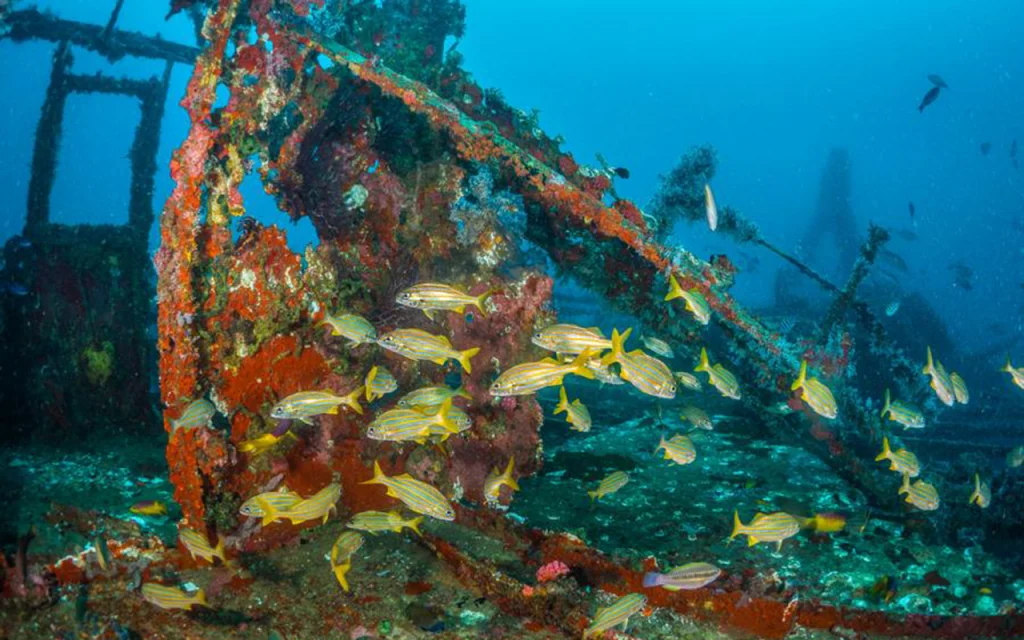
What Safety Measures Are In Place For Divers Visiting The SS Tarpon
There are a few key safety measures in place for divers visiting the SS Tarpon wreck:
Underwater Archaeological Preserve
- The SS Tarpon is located within a Florida Underwater Archaeological Preserve, which helps protect the wreck site for responsible diving and exploration.
Dive Guides and Brochures
- Many local dive shops provide informational brochures about the SS Tarpon wreck to educate divers on its history and proper diving etiquette.
- Laminated underwater guides are also available from local dive shops to assist divers at the site.
Wreck Marker
- A large concrete monument with a bronze plaque marks the location of the SS Tarpon wreck, making it easier for divers to find and avoid accidentally damaging the site.
Depth and Conditions
- The SS Tarpon lies at a depth of around 90-95 feet, which is within the range of most recreational divers with proper training and experience.
- Visibility is generally decent, though it can become murky after heavy rainfall.
Diver Responsibility
- Divers are reminded that shipwrecks are nonrenewable resources that must be protected for future generations.
- Responsible diving practices like not touching or removing artifacts help preserve the historical integrity of the site.
Dive Shops That Provide Diving Trips to This Shipwreck
- Diver’s Den in Panama City Beach is quoted as saying “The Tarpon is one of our favorite dive sites here at the shop.” This suggests Diver’s Den likely offers trips to the SS Tarpon wreck.
- The results state that “Many local dive shops have informational brochures about SS Tarpon as well.” This implies there are multiple dive shops in the Panama City area that cater to divers interested in exploring the wreck.
- A laminated underwater guide to the SS Tarpon is “available from local dive shops to orient divers on a visit to the wreck.” Again, this points to the wreck being a popular destination for Panama City area dive operators.
So while an exhaustive list is not provided, the search results indicate that dive shops in the Panama City, Florida area, such as Diver’s Den, likely offer regular diving excursions to the SS Tarpon wreck site. The wreck’s status as one of Florida’s Underwater Archaeological Preserves and a popular local dive site suggests multiple operators likely include it on their dive trip itineraries.
North Florida Wrecks
- USS Oriskany
- USS Massachusetts
- SS Tarpon
- SS Gulf America
- Empire Mica
- USS Chippewa
- Avocet
- Black Bart
- The Vamar
- San Pablo
- USS Narcissus
- The Loftus Wreck
- The Dorothy Louise
- The Mizpah
- MV Janet
- The Eidsvag
- YDT-14 and YDT-15
- USS Strength
- Miss Louise
- The Lulu
- PC-1174
- Three Coal Barges
- USS Accokeek (ATA-181)
- El Dorado
- The Grey Ghost
- The Pete Tide II
- Red Sea Tug


